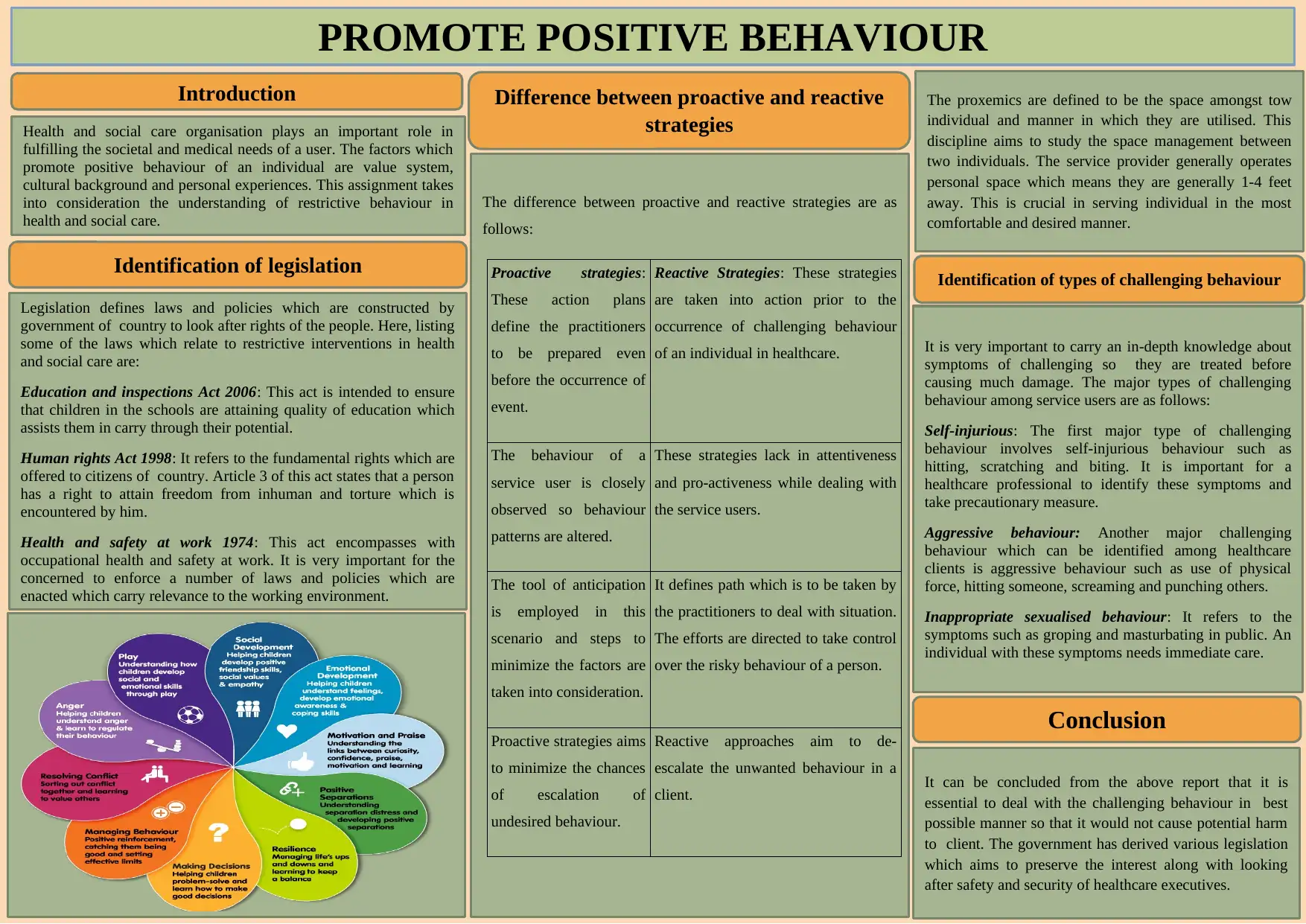Promoting Positive Behavior: Legislation & Strategies in Health Care
VerifiedAdded on 2023/03/21
|1
|637
|21
Report
AI Summary
This report examines the promotion of positive behavior within health and social care organizations, emphasizing the significance of individual value systems, cultural backgrounds, and personal experiences. It identifies key legislation, such as the Education and Inspections Act 2006 and the Human Rights Act 1998, that govern restrictive interventions. The report differentiates between proactive and reactive strategies for managing challenging behavior, highlighting the importance of anticipation and minimizing escalation. It also identifies types of challenging behaviors like self-injurious, aggressive, and inappropriate sexualized actions, stressing the need for prompt intervention. The conclusion underscores the necessity of effectively addressing challenging behavior while adhering to relevant legislation to ensure the safety and security of both clients and healthcare professionals. Desklib provides access to similar reports and study tools for students.







![[object Object]](/_next/static/media/star-bottom.7253800d.svg)